Overview
Version
| FineBI Version | User Center Plugin Version |
|---|---|
6.0 | V1.0.0 |
Function Description
This document briefly introduces how to use the User Center plugin.
Plugin Introduction
Plugin Installation
Click to download the plugin: bi-plugin-user-center-overseas-1.1.1.20.zip.
For details, see Plugin Management.
Page Overview
The user center page is divided into three tab pages: Growth Center, Operations Center, and My Profile.

The following table explains specific content.
| Content | Target Group | Description |
|---|---|---|
Growth Center | All users of the FineBI system | Provides different growth paths and helps users to learn how to use FineBI. Allows users to search online help documents and jump to various learning resources quickly. |
Operations Center | Super admins of the FineBI system | Activeness Monitoring: includes System Use Indicator, System Activeness, Department Lifecycle, and User Activeness. Loss Monitoring: includes Loss Warning, Loss Possibility Analysis, and Loss Analysis. |
My Profile | All users of the FineBI system | Allows users to view the information of the current login user. |
Growth Center
Growth Center provides different learning paths for learners in different stages. There are three stages: Beginner, Intermediate, and Advanced.
| Growth Path | Description |
|---|---|
Beginner | Allows beginners to get started from the following three aspects: 1. Learn how to download and install FineBI. 2. Learn various FineBI functions and cultivate business analysis ideas. 3. Pass the FCA-FineBI (Fanruan Certified Associate-FineBI) exam. |
Intermediate | Allows users to perform practices from the following three aspects: 1. Learn advanced help documents including various aspects of the actual use of FineBI (like specific topics, functions, application, and analysis in FineBI). 2. Pass the FCP-FineBI (Fanruan Certified Professional-FineBI) exam. 3. Learn more industry applications. |
Advanced | Allows users to learn FineBI function points in depth from the following three aspects: 1. Master platform daily O&M. 2. Learn resource deployment and integration and use FineBI in depth. 3. Learn FineBI upgrade and experience new functions. |


My Profile
My Profile displays personal information, allowing you to view the FineBI account of the current login user.

Operations Center
 Note:
Note:1. Operations Center is only visible to the super admin.
2. Data dashboards in Operations Center may be empty because the Cloud O&M function on which the data dashboards depend are not configured.
For users on external networks, the Cloud O&M function is automatically installed at 0:00 A.M.
For users on internal networks, the Cloud Analysis plugin can be downloaded from the FanRuan market. For details, see Plugin Management. After installation, the Cloud O&M function is configured and data dashboards can be viewed in three days later.
Operations Center (consisting of Activeness Monitoring and Loss Monitoring) can help managers to quantify the activeness of the FineBI system and the loss of users through multidimensional data dashboards.
Activeness Monitoring
The following tables show the relevant activeness indicators.
1. Lifecycle
| Period | Description | Indicator |
|---|---|---|
Input Period | Period in which users do not meet the design user standard (namely, performing edit for more than 5 times). | Monthly average edit times in the past three months ≤ 5 |
Novice Period | Period in wihch users begin to use FineBI. In this period, these users are not very good at self-service datasets. They can only create dashboards through simply-processed/processed data tables and create simple charts and tables (like group tables, detail tables, and pie charts) through FineBI. | Cumulative edit times ≤100 and cumulative number of months in which edit is performed ≤ 4 |
Growth Period | Period in which users have been using FineBI. They can create relatively complex charts and tables. But they need to refer to help documents/external assistance to complete more flexible analysis. | Cumulative edit times > 100 or cumulative number of months in which edit is performed > 4 |
Maturity Period | Period in which users can finish their analysis flexibly and independently. They can create complex charts and tables and have been using FineBI for data analysis for over one year. | Cumulative edit times > 200 or cumulative number of months in which edit is performed > 10 |
Lost | Period in which users have not performed any edit in FineBI for a long time. | Cumulative number of months in which edit is performed = 3 and edit times within 60 days = 0 Or Cumulative number of months in which monthly edit is performed ≤ 2 and edit times within 120 days = 0 |
2. Activeness
| Indicator | Description |
|---|---|
Number of Platform Access Users | Deduplicated number of users who have viewing or editing behaviors in FineBI within the filtered period. |
Number of Edit Users | Deduplicated number of users who have edited datasets, components, and dashboards in FineBI within the filtered period. |
Analyst Quantity | Analyst: users editing dashboards for more than 15 times in the past 30 days. Analyst quantity: deduplicated number of users who meet the analyst definition within the filtered period. |
Number of New Viewers | umber of users who view dashboards for the first time within the filtered period. |
Number of New Analysis Users | Number of users who edit dashboards for the first time within the filtered period. |
System Use Indicator
System Use Indicator displays the total number of system dashboards and the number of active dashboards (accessed more than 5 times in the previous natural month).

System Activeness
System Activeness displays the behavior number of different users in the system through indicator cards and line charts.
Admins can filter the viewing time range and export detailed data (as Excel files) to the local computer.
Click View User Behavior Details in Platform Log in the upper right corner by the admin and view the access details under System Management > Platform Log > Access Statistics.

Department Activeness
Department Activeness displays the behavior number of different users in different departments through pie charts and detail tables.
Admins can filter departments and view the department activeness rank by the user quantity in descending order. Admins can also export detailed data (as Excel files) to the local computer.
The indicators are explained in the following figure.

User Activeness
User Activeness displays the lifecycle and behavior number of each user through detail tables.
Admins can filter departments/users/lifecycle and view the user activeness rank by the user activeness in descending order. Admins can also export detailed data (as Excel files) to the local computer.

Loss Monitoring
Loss Warning
Loss Warning displays the number of users who have high loss risks (namely, users who edited nothing in the past 30 days) through indicator cards.

Loss Possibility Analysis
Loss Possibility Analysis displays the loss possibility analysis and behavior number of each user who has the loss possibility through detail tables.
Admins can filter departments/users/loss possibility levels and view the rank by the user loss risk in descending order. Admins can also export detailed data (as Excel files) to the local system.
| Indicator | Definition |
|---|---|
Low Loss Risk | No edit behavior for more than 12 days |
High Loss Risk | No edit behavior for more than 30 days |

Loss Analysis
Loss Analysis displays the behavior number and the number of days since last edit of each loss user through detail tables.
Admins can filter departments and users and view the rank by the user's last edit date in the ascending time order. Admins can also export detailed data (as Excel files) to the local computer.
The following table shows two types of users that can be considered as lost users.
| Indicator | Definition |
|---|---|
Lost high-frequency edit user | High-frequency edit user: user whose number of months in which monthly edit is performed is equal to 3 in the past three months. Lost high-frequency edit user: high-frequency edit user who has no edit behaviors in the past 60 days. |
Lost low-frequency edit user | Low-frequency edit user: user whose number of months in which monthly edit is performed is less than or equal to 2 in the past three months. Lost low-frequency edit user: low-frequency edit user who has no edit behaviors in the past 120 days. |





